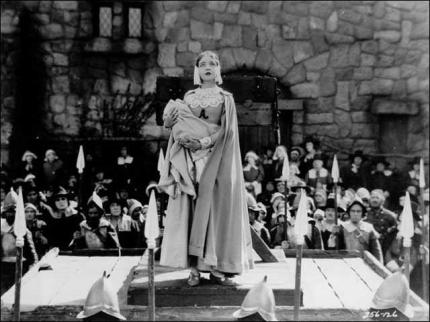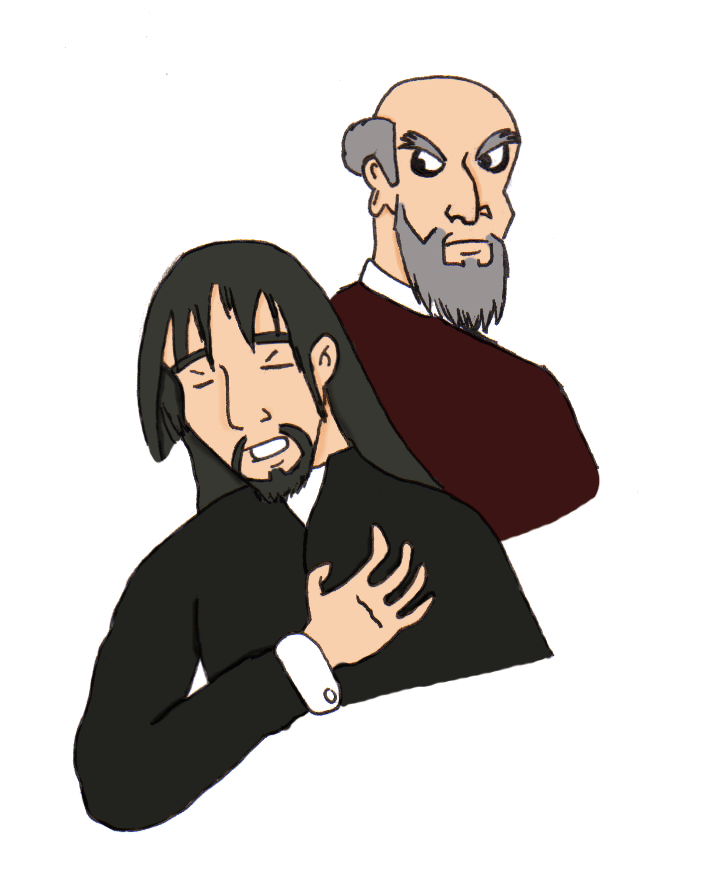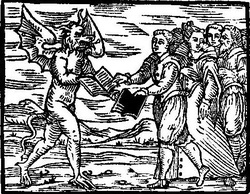Summary of Chapter 24
As the title of the chapter suggests this last chapters concludes all answered questions in the story of The Scarlet Letter. Throughout the novel Nathaniel Hawthorne weaves many intricate details within the story and this chapter ties them off. In the previous chapter in a moment of catharsis Dimmesdale reveals all his hidden sin and unites on the scaffold with Hester and Pearl. Soon after his release Dimmsdale dies in Hester's arms. Many rumors circulate about Dimmesdale's death and his last sermon. Some people swear they saw a red letter A on his chest. The rumors of this letter were just as great as the rumors around Hester's matching A. The speculations were as varied as they were many.Some believed that it was a wound Dimmesdale inflicted upon himself as punishment. Others theorized it was the result of guilt he felt for his sins. Another theory was that it was from the poison Chillingworth gave him. The people of high status in the town deny him even having a letter a on his skin. They go further to deny that he even committed adultery and fathered Pearl. Soon after Dimmesdale's death Cillingworth's health quickly deteriorated. He died leaving pearl all of him money in his will. Hester and Pearl disappeared after the death's of Dimmesdale and Chillingworth.
Years later Hester returns to town without Pearl. Hester moves back into her house that had been left untouched all the years she had been gone. While she was gone the stigma her letter a held disappeared Although Hester still felt the sin that was tied to it the others saw it as somewhat of a badge of honor. The women of the town came to her to seek out advice on how to repent for their own sins. When Hester died she was buried in a grave near Dimmesdale sharing a tombstone.
The Scarlet Letter
The meaning behind the Scarlet Letter changes often through out the novel. In the beginning of the novel the letter A stood for the worst imaginable sin in puritan culture, adultery Hester was given this to set her aside as a reject from society. She had done wrong and was to spend the rest of her life being constantly reminded what she had done and feeling the burning eyes of hate upon her. Hester rebelled against this not outwardly but through her refusal to let it crush her. She instead she bore her punishment and further punished herself. The letter's next meaning is shown when it appears on Dimmesdale's chest. In this scenario the letter stood for the guilt Dimmesdale felt. His guilt stemmed from his denial of Hester and Pearl and from his lies to the people of his congregation. Unlike Hester's a, Dimmesdale's was hidden from the public. Instead of being able to embrace his a it ate him up inside eventually making him physically. Later the symbolism changes yet again When people unfamiliar with Hester's story see her letter a they assume it stands for some status she has. This transformation is shown when Nathaniel Hawthorne writes on page 203 of The Scarlet Letter, "But in the lapse of the toilsome, thoughtful, and self-devoted years that made up Hester's life, the scarlet letter ceased to be a stigma which attracted the world's scorn and bitterness, and become a type of something to be sorrowed over, and looked upon with awe, yet with reverence, too." The Scarlet Letter became somewhat of a badge of honor. When she was first forced to wear the A it was meant to shame her but instead over time became a symbol of her strength.
Why did Hester Return?
At the end of the novel Hester returns to the place where she once dreamed of escaping. Her actions seem to not be in line with the way she was treated so why does she return when she finally escaped? Hester realizes at the end of her journey what her purpose is within her society. Hester is not there to be ridiculed or be a warning to children. She instead grows to represent to hope in human kind. Puritans believed that all humans are born evil and only a few can be redeemed Hester's story proves this wrong. A woman that committed the worst sin imaginable is redeemed in the eyes of her peers. By baring her punishment and refusing to believe she was in fact evil she does not allow the experience to harden her. She never really fully forgives herself but she learns how to forgive others. Her strength set an example for others to live. Through her trials she came to believe that to be good one does not have to be miserable her realization is shown on page 203, when Hawthorne writes, "She assured them, too, of her firm belief that, at some brighter period, when the world should have grown ripe for it, in Heaven's own time, a new truth would be revealed, in order to establish the whole relation between man and woman on surer ground of mutual happiness." Hester returned because she knew there was nowhere else she belonged. She knew she belonged where she committed the sin that changed her life forever. She stayed not just o remind her of her past to also to let people know forgiveness is always a possibility.



























